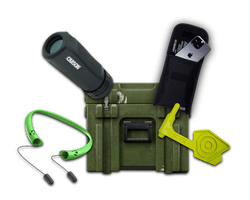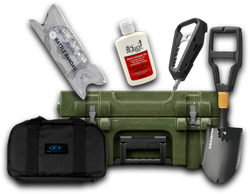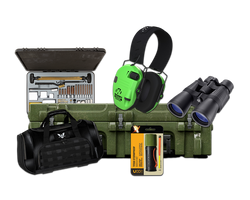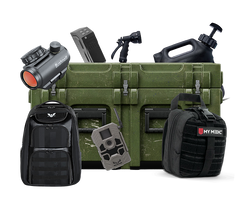
Vehicle Prep for Any Road Survival Scenario
Whether your car is your go-to transportation mode or you must travel long distances on it for some reason, it is better to prepare your vehicle for any road survival scenario. You never know when a survival scenario can hit. This fact is especially truer during winter when snowing and trapping inside your car seems a nightmare for every traveler.
We have already experienced some disastrous storms, especially during winter. For example, the one that happened in Virginia. The storm caused vehicle collisions and a total standstill of traffic for about 24 hours. Hunger, fuel rotation, and sleep deprivation made the experience a nightmare that no one expected.
Tips to prepare your vehicle for any road survival scenario
And once you are struck in any road survival scenario, things can get worse within a few hours. We have brought some essential vehicle prep tips for any road survival scenario to avoid any such thing.
So, here we go:
Perform vehicle checks and maintenance
People who have been driving for longer can easily tell that your vehicle doesn't have to be a clunker to break down on any road. It can happen at any inopportune time. Even though cars have become more reliable at present but still prepping them for a road survival scenario is smart.
Firstly, you should focus on making your vehicle well-maintained to survive any emergency or disastrous situation. It means you have to ensure top-notch regular maintenance of your car.
Regular vehicle checks and maintenance usually include:
- Radiator: An efficiently working radiator is essential to cool your engine, transmission fluid, and heating system. Fortunately, the maintenance of the radiator and its linked systems is easier. Replace the radiator, thermostat, and heater hoses every 3 years.
- Tires: Keep your tires in the best condition to make this road-ready. Use suitable tires according to the weather outside. Moreover, keep the pressure of your tires in spec, and rotate them with every oil change. Feel free to replace these when the time has arrived.
- Engine: Besides regular filter and oil changes, other items also require periodic maintenance for ensured engine efficiency. The timing belt is one such item to consider here. These belts are vulnerable to fatigue and wear just like a serpentine belt. So, it would help if you considered replacing it after 50,000 to 60,000 miles. The break of the timing belt will cause catastrophic damage. Therefore, preventive care is better.
- Exhaust system: Even though most of the exhaust system's part doesn't require maintenance, the catalytic converter is the key component that controls the emissions. Maintaining your engine can keep you from the major expense of replacing a catalytic converter.
- Fuel system: The fuel system of your car contains different components. Keeping these in order will keep you from developing any major problems. In most cases, the fuel system is the major failure during a road survival scenario, and that's due to a burnt-out pump. Constant car running can make your pump sit out of fuel and get hotter over time. Keeping your fuel tank above ¼ can help you prevent this potential issue. Clogged filters are another key failure. Fuel filters aren’t costly. Therefore, it is better to change them annually to avoid this problem. The air filter is another important component of the fuel system. Using medium-quality air filters can do the job here because these usually require replacement over time.
- Headlights: The headlights of your car are computer-controlled. Even though the newest models feature headlights with better light, however, these also pose a shorter lifespan. So, whenever you feel your headlights are getting less efficient, restore these for near-new clarity.
Prepare your emergency car survival kit.
An emergency survival kit in the car is a must to prepare for any road survival scenario. Here we have some of the best things that you must keep in your emergency car survival kit includes:
- Floor jack
- Jumper cables
- Mobile charger
- Spare hoses
- Vehicle fluids
- Extra fuel
- Spare tiers
- A tow cable,
- Emergency navigation tool
Stock up on your essentials
At least it would be best if you always kept a regular bag in your car. There are certain things that you must stock up in that bag. These things can help you stay fueled during a road survival scenario. These include:
- Ready-to-eat food items or snacks
- Water
- First Aid kit
Additional safety tips to stay secure on the route
Even though people usually only go within the phone coverage range these days, a winter storm or other emergencies can present some unique challenges, especially when you are struck into a road survival scenario. In such situations, even short rides can also become treacherous.
Being prepared is always the best if you ever have to go on a long trip during the hardest months. Here we have enlisted some effective tips that you must practice to stay safe in any situation.
So, here we go:
- Tell any of your friends or family members about where you are heading and for how long. Tell them that you will text when you are safe. However, if you aren’t responding to their calls or messages for longer, they will get to know something needs to be fixed.
- At present most people rely on GPS or maps to enroute their journeys. However, it is imperative to understand your terrain and rely on something other than GPS. It is because the accuracy of these apps drops when you are in truly rural areas.
- It is wise to pack some extra clothing layers if you are out during winter. Even if you don't have plans to step out of the car, having some hot gloves, cozy hats, and other such items is better.
- Pack the right gears to summon help from anyone during a tough situation.
Final Thoughts
Despite the severity of the situation, it is always important to make some essential vehicle preps to keep yourself from putting yourself into any bad situation. A road survival situation can sometimes get more dangerous than you think. So, it is always important to consider the best vehicle prep tips we have considered above.
Image by Janusz Walczak from Pixabay
Share this article








